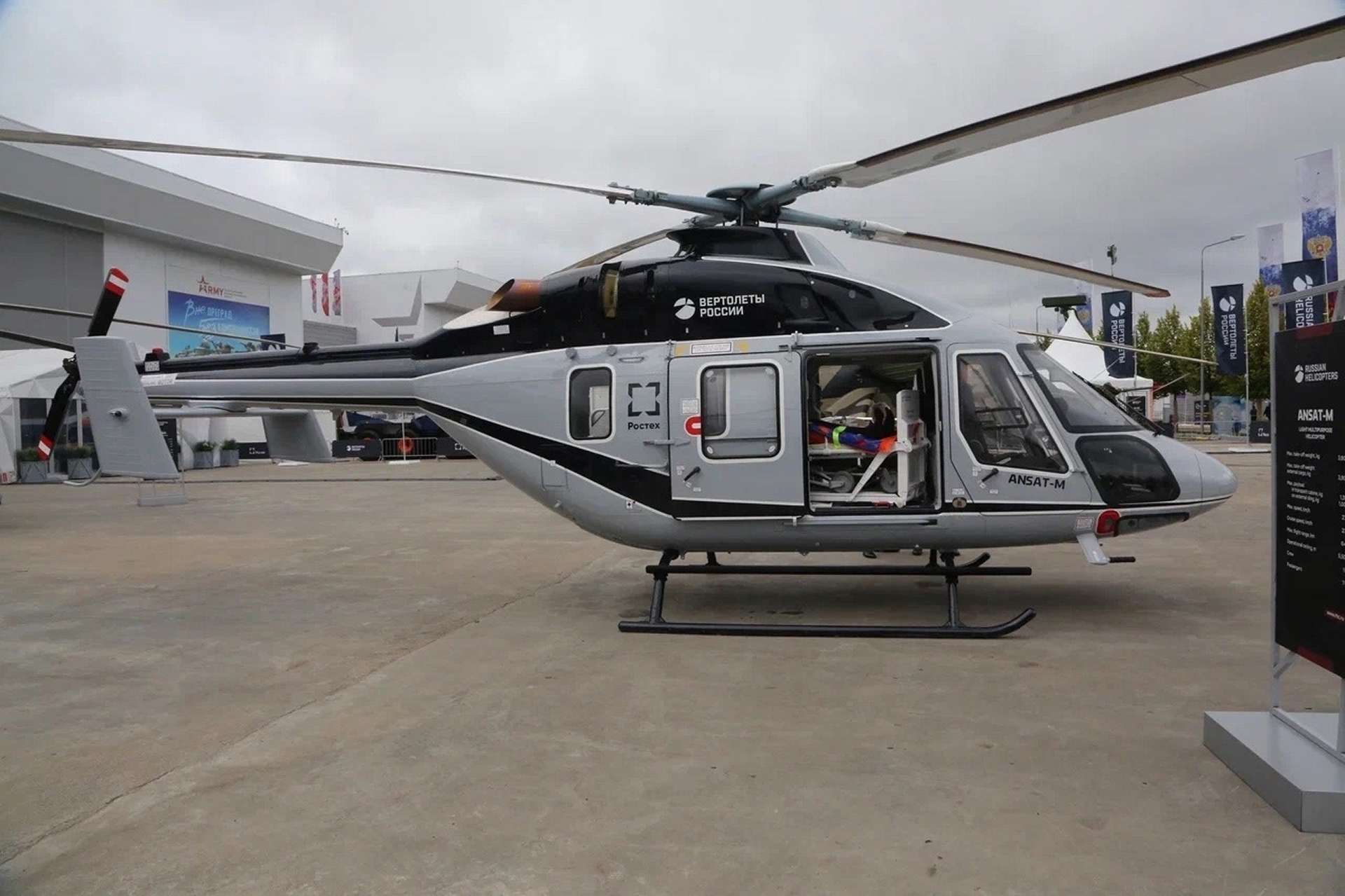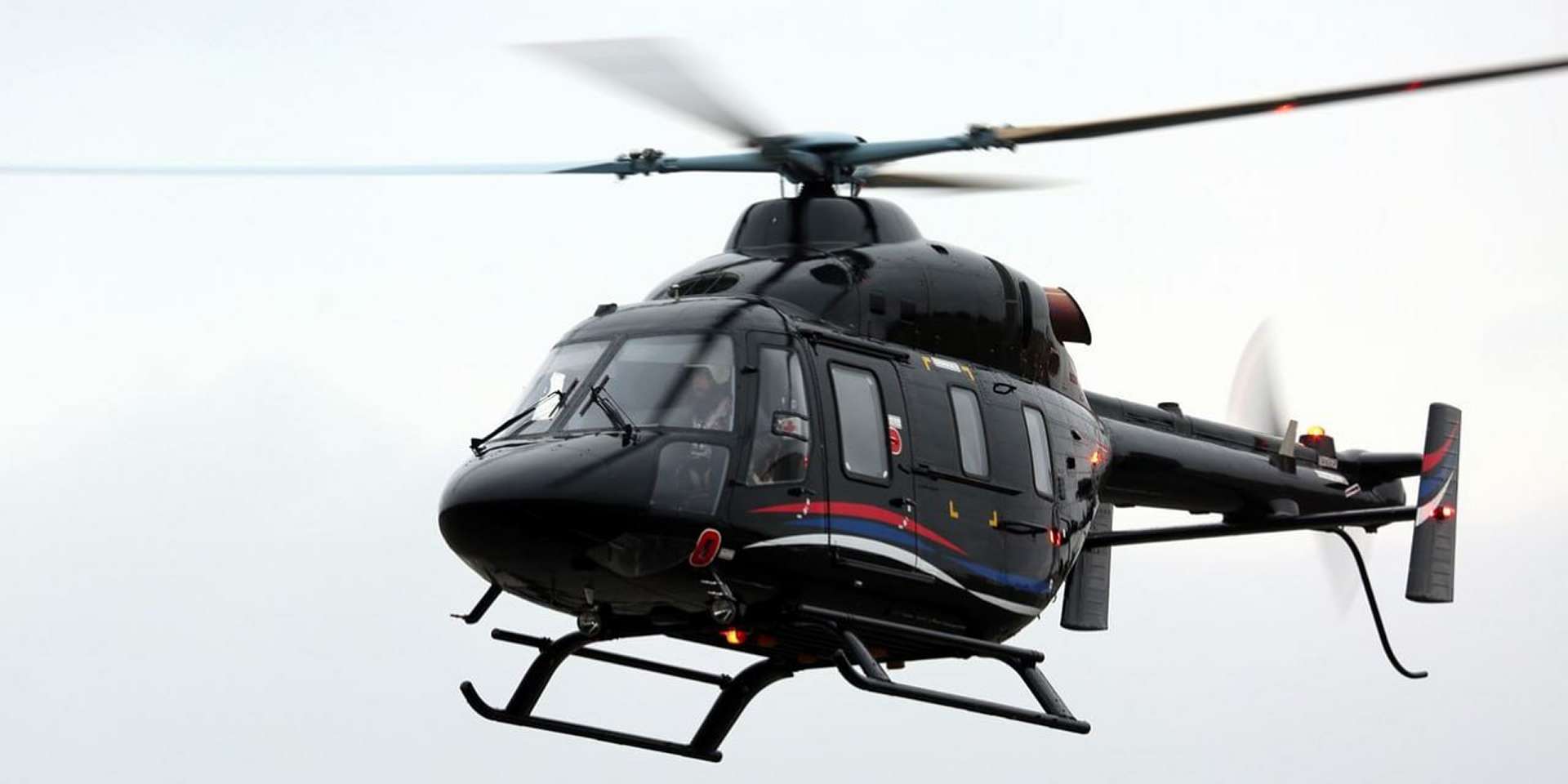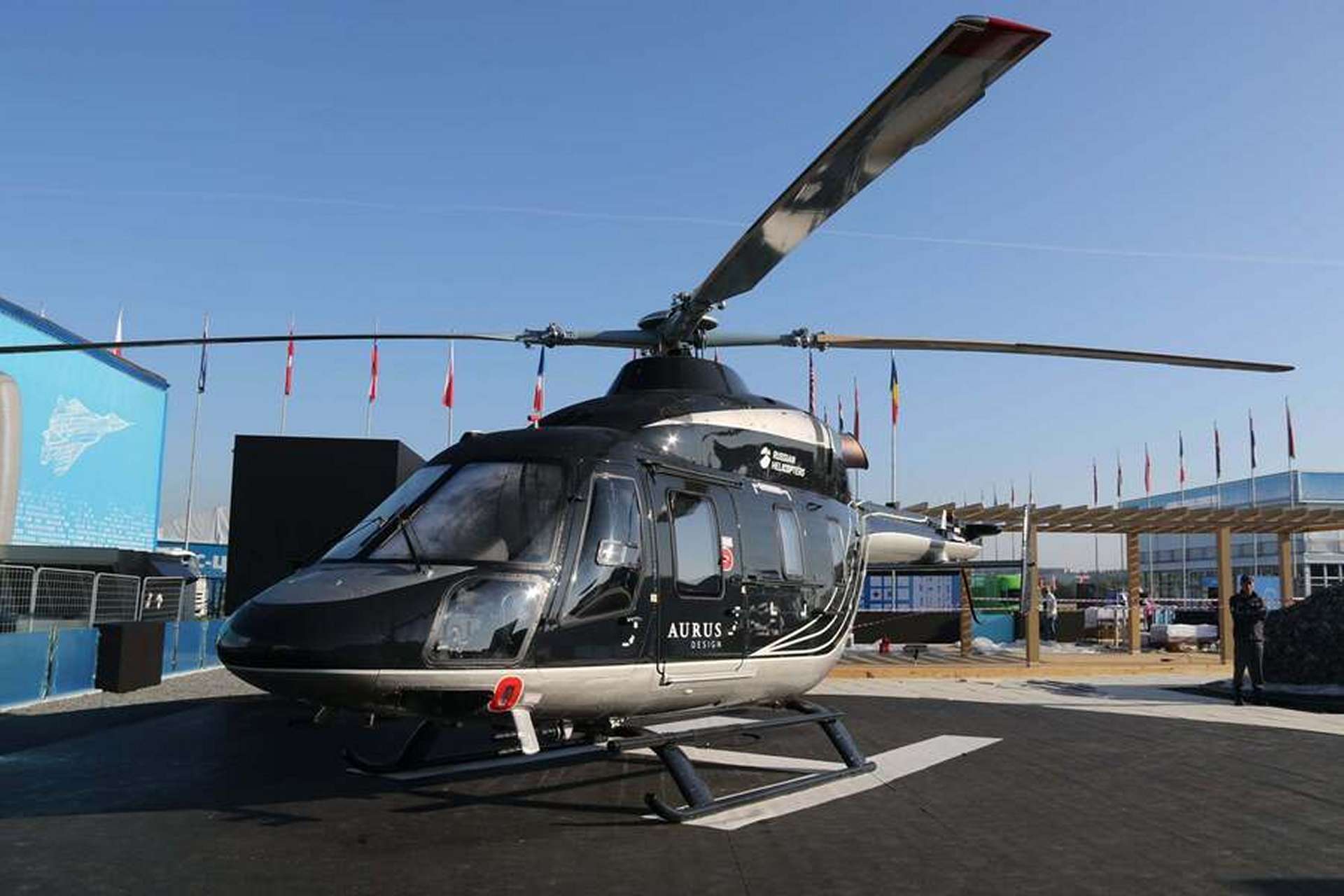Rostec presents new version of Ansat helicopter with all-Russian components

{loadposition bannertop}
{loadposition sidebarpub}
At the Army-2024 International Military-Technical Forum, the Russian Helicopters holding company, part of the Rostec State Corporation, introduced an updated version of the Ansat helicopter. This version is notable for being fully produced with domestically sourced components, reflecting a significant shift towards reducing dependence on foreign technologies. The helicopter, manufactured at the Kazan Helicopter Plant, was presented in an ambulance configuration equipped with a medical module designed for patient transport and in-flight care.Follow Army Recognition on Google News at this link
The updated Ansat is powered by two Russian VK-650V engines, replacing the previously used American Pratt & Whitney PW-207K turboshaft engines. (Picture source: Rostec)
The updated Ansat is powered by two VK-650V engines, replacing the previously used Pratt & Whitney PW-207K turboshaft engines. The VK-650V, developed by UEC-Klimov, is the first Russian helicopter engine in the 650-750 horsepower class. It is intended to replace foreign engines not only in the Ansat but also in other Russian helicopters like the Ka-226T. The Ansat can also be fitted with an additional fuel tank, which extends its flight range to 800 kilometers.
The helicopter’s medical module includes equipment such as an artificial lung ventilation system and tele-ECG, allowing for the maintenance of vital functions and the provision of intensive therapy during flight. This makes the Ansat suitable for medical evacuation missions, particularly in areas where immediate access to medical facilities is limited.
Vladimir Artyakov, First Deputy Director General of Rostec State Corporation, noted that this version of the Ansat is the first to be presented with all foreign components replaced by Russian-made systems. The helicopter has undergone frequency tests of its control system at the N.E. Zhukovsky Central Aerohydrodynamic Institute, and it is now being prepared for ground and flight tests.
The Ansat features a spacious cabin, the largest in its class, which allows for versatility in its use. It is designed to operate in temperatures ranging from -45 to +50 degrees Celsius and at high altitudes, making it adaptable to various missions, including those in dense urban areas. The helicopter is noted for its maneuverability and ease of maintenance.
The Ansat can also be fitted with an additional fuel tank, which extends its flight range to 800 kilometers. (Picture source: Russian social media)
In addition to the updates on the Ansat, UEC-Klimov announced at the HeliRussia-2024 exhibition that the certification of other helicopters with VK-series engines is progressing. The VK-1600V engine, intended for the Ka-62 helicopter, is expected to be certified by the end of 2024, with deliveries planned for 2025. However, there have been reports of challenges in the development of the VK-650V engine, with some insiders expressing concerns about its progress and reliability. The VK-1600V, according to reports, has yet to undergo significant testing.
Despite these challenges, UEC-Klimov has indicated that the first flight of the Ansat with the VK-650V engines is expected to occur this year, with type certificates for both the engine and the helicopter anticipated by the end of 2024. Deliveries of the new Ansat model are projected to begin in 2025.
The Ansat helicopter, a light twin-engine model, is designed for a range of roles, including passenger and cargo transport, search and rescue, patrol, training, VIP transport, and firefighting. It has a maximum takeoff weight of 3,600 kilograms, a cruising speed of 220 km/h, and a flight range of up to 505 kilometers with its main fuel tanks. The helicopter’s design complies with AP-29 (FAR-29) standards, offering safety features that include the ability to perform single-engine flight and landing.
The Ansat helicopter, a light twin-engine model, is designed for a range of roles, including passenger and cargo transport, search and rescue, patrol, training, VIP transport, and firefighting. (Picture source: Russian Helicopters)

{loadposition bannertop}
{loadposition sidebarpub}
At the Army-2024 International Military-Technical Forum, the Russian Helicopters holding company, part of the Rostec State Corporation, introduced an updated version of the Ansat helicopter. This version is notable for being fully produced with domestically sourced components, reflecting a significant shift towards reducing dependence on foreign technologies. The helicopter, manufactured at the Kazan Helicopter Plant, was presented in an ambulance configuration equipped with a medical module designed for patient transport and in-flight care.
Follow Army Recognition on Google News at this link
The updated Ansat is powered by two Russian VK-650V engines, replacing the previously used American Pratt & Whitney PW-207K turboshaft engines. (Picture source: Rostec)
The updated Ansat is powered by two VK-650V engines, replacing the previously used Pratt & Whitney PW-207K turboshaft engines. The VK-650V, developed by UEC-Klimov, is the first Russian helicopter engine in the 650-750 horsepower class. It is intended to replace foreign engines not only in the Ansat but also in other Russian helicopters like the Ka-226T. The Ansat can also be fitted with an additional fuel tank, which extends its flight range to 800 kilometers.
The helicopter’s medical module includes equipment such as an artificial lung ventilation system and tele-ECG, allowing for the maintenance of vital functions and the provision of intensive therapy during flight. This makes the Ansat suitable for medical evacuation missions, particularly in areas where immediate access to medical facilities is limited.
Vladimir Artyakov, First Deputy Director General of Rostec State Corporation, noted that this version of the Ansat is the first to be presented with all foreign components replaced by Russian-made systems. The helicopter has undergone frequency tests of its control system at the N.E. Zhukovsky Central Aerohydrodynamic Institute, and it is now being prepared for ground and flight tests.
The Ansat features a spacious cabin, the largest in its class, which allows for versatility in its use. It is designed to operate in temperatures ranging from -45 to +50 degrees Celsius and at high altitudes, making it adaptable to various missions, including those in dense urban areas. The helicopter is noted for its maneuverability and ease of maintenance.

The Ansat can also be fitted with an additional fuel tank, which extends its flight range to 800 kilometers. (Picture source: Russian social media)
In addition to the updates on the Ansat, UEC-Klimov announced at the HeliRussia-2024 exhibition that the certification of other helicopters with VK-series engines is progressing. The VK-1600V engine, intended for the Ka-62 helicopter, is expected to be certified by the end of 2024, with deliveries planned for 2025. However, there have been reports of challenges in the development of the VK-650V engine, with some insiders expressing concerns about its progress and reliability. The VK-1600V, according to reports, has yet to undergo significant testing.
Despite these challenges, UEC-Klimov has indicated that the first flight of the Ansat with the VK-650V engines is expected to occur this year, with type certificates for both the engine and the helicopter anticipated by the end of 2024. Deliveries of the new Ansat model are projected to begin in 2025.
The Ansat helicopter, a light twin-engine model, is designed for a range of roles, including passenger and cargo transport, search and rescue, patrol, training, VIP transport, and firefighting. It has a maximum takeoff weight of 3,600 kilograms, a cruising speed of 220 km/h, and a flight range of up to 505 kilometers with its main fuel tanks. The helicopter’s design complies with AP-29 (FAR-29) standards, offering safety features that include the ability to perform single-engine flight and landing.

The Ansat helicopter, a light twin-engine model, is designed for a range of roles, including passenger and cargo transport, search and rescue, patrol, training, VIP transport, and firefighting. (Picture source: Russian Helicopters)




